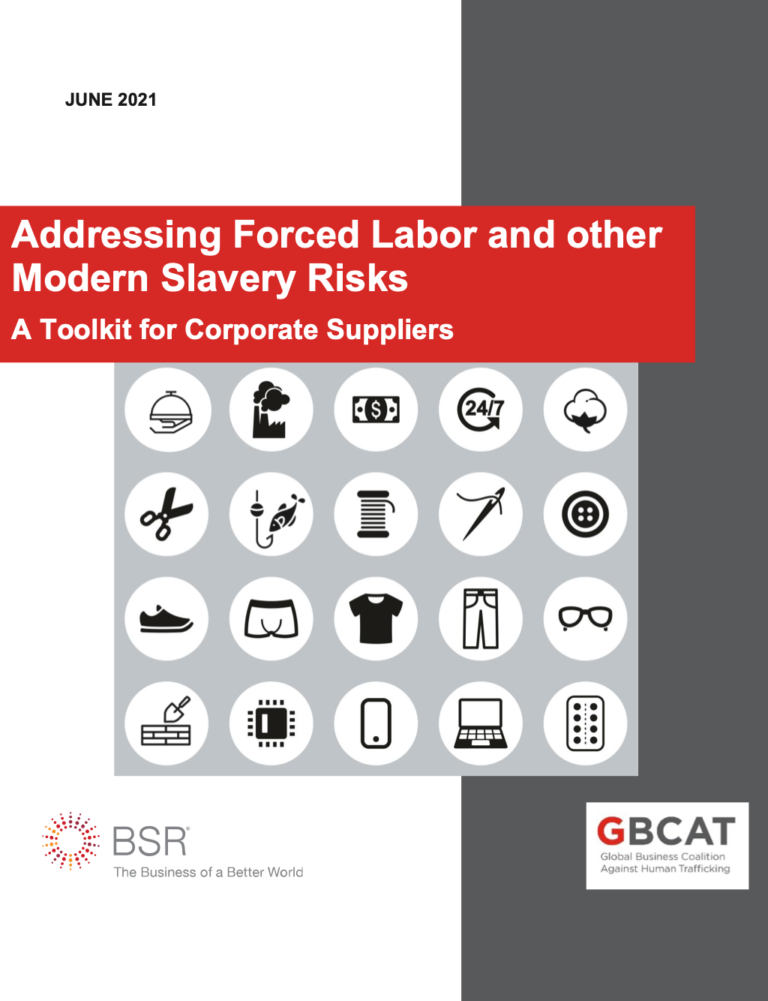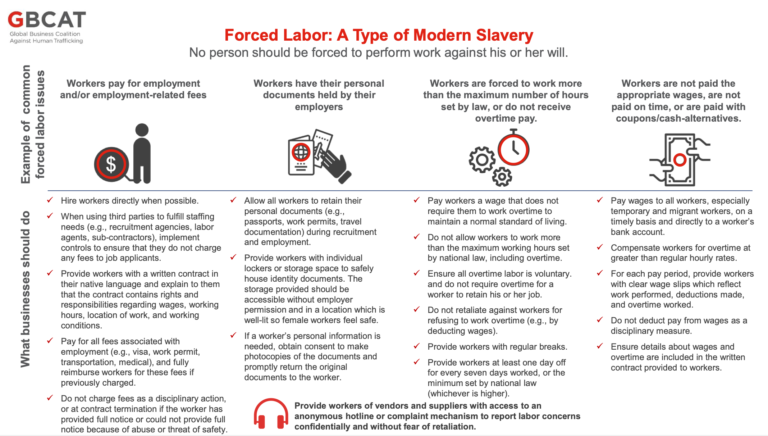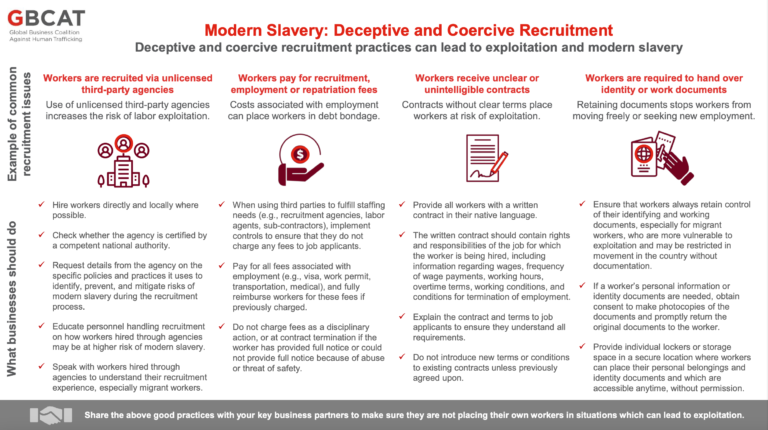Sample: Excerpt of contract between corporate supplier and its business partner
GuidanceExcerpt of a contract between corporate supplier and its Business Partner (Supplier, Recruitment Agency, Contractor).
This toolkit aims to help companies that work in corporate supply chains to quickly identify areas of their business which carry the highest risk of modern slavery and develop a simple plan to prevent and address any identified risks. It is designed particularly for small and medium-sized enterprises (SMEs), which typically face the greatest modern slavery risks across supply chains, but can be considered a resource for companies of all sizes as they get started.



Excerpt of a contract between corporate supplier and its Business Partner (Supplier, Recruitment Agency, Contractor).
This report considers the legal rules, policies and practices of public procurement in Northern Ireland, and evaluates the extent to which these respect human rights. This focus is timely and aims to:– ensure the engagement by public authorities o...Read More
The year 2021 marked another discouraging year in terms of remedy for complaints by communities and civil society under the OECD Guidelines for Multinational Enterprises (Guidelines). Only 2 of the 22 cases concluded in 2021 by National Contact Poin...Read More
As the information and communication technology (ICT) industry rapidly expands, it has the power to support democratic, accountable institutions and the exercise of civic freedoms or perpetuate violations of individual and collective rights. As ...Read More